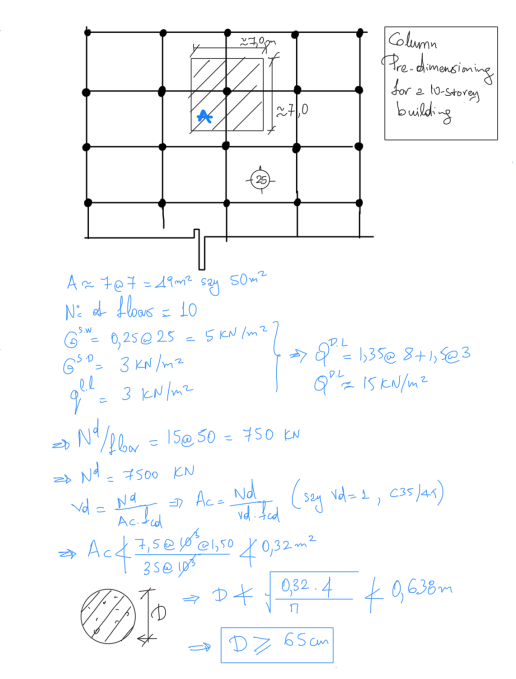The Importance of Hand Calculations for Structural Engineers: Ensuring Competency and Reliability

In the modern era, structural engineers have access to a plethora of advanced engineering software that can simplify and expedite complex calculations. Whilethese tools offer undeniable benefits in terms of efficiency and precision, relying solely on engineering software can pose certain risks. In engineering discussions, there is a common observation that emphasizes the significance ofpreferred engineering software, while concurrently neglecting the crucial aspect of engineers maintaining control over the software at all times. This phenomenon reveals a tendency to prioritize the technical capabilities and features of the software, possibly overlooking the need for engineers toactively monitor, control and regulate its functioning.
Thisdocument aims to highlight the reasons why a structural engineer shall be ableand competent to conduct hand calculations and not blindly trust engineeringsoftware.
- Conceptual Understanding:
Handcalculations demand a thorough understanding of the underlying principles andtheories of structural engineering. Engaging in manual computations compelsengineers to delve into the fundamental concepts, such as equilibrium,compatibility, and material behavior. This in-depth understanding enablesengineers to catch errors, interpret results, and apply judgment in criticalsituations.
- Verifying Software Outputs:
Even themost advanced engineering software can be susceptible to bugs, errors in input,or incorrect assumptions. By performing hand calculations, structural engineerscan independently verify the outputs of the software. This redundancy acts as asafety net and helps identify discrepancies early on, ensuring reliable and accurateresults.
- Handling Complex or Unique Structures:
Engineeringsoftware is designed to handle typical scenarios encountered in structuraldesign. However, it may struggle with more complex or unconventional structuresthat fall outside the software's pre-defined parameters. In such cases, handcalculations can be a valuable alternative, as engineers can adapt methods andassumptions to suit the specific requirements of the structure.
- Sensitivity Analysis:
In someinstances, structures may be highly sensitive to certain parameters or loadingconditions. Hand calculations offer greater flexibility in performingsensitivity analyses, allowing engineers to assess how variations in inputsaffect the overall structural response. This level of scrutiny can lead tobetter-informed design decisions.
- Educational and Professional Development:
Conductinghand calculations fosters continuous learning and professional development. Itallows structural engineers to keep their skills sharp and stay up-to-date withindustry standards and best practices. Moreover, it nurtures problem-solvingabilities, creativity, and critical thinking—traits that are invaluable inaddressing complex engineering challenges.
- Ethical Responsibility:
Asprofessionals responsible for public safety, structural engineers mustprioritize the reliability of their designs. Blindly trusting engineeringsoftware without a thorough understanding of the underlying principles may leadto potential errors going unnoticed, compromising the structural integrity of abuilding or infrastructure.
- Limited Software Availability:
Incertain situations, structural engineers may not have access to reliableengineering software due to technical limitations, outdated versions, or budgetconstraints. In such cases, hand calculations become indispensable for ensuringthe structural integrity of a project.
Conclusion:
Inconclusion, while engineering software undoubtedly enhances the efficiency ofstructural engineering tasks, it should not be relied upon blindly. Competencyin conducting hand calculations is essential for a structural engineer toensure conceptual understanding, verify software outputs, address complexscenarios, perform sensitivity analyses, and uphold ethical responsibilities.By embracing both hand calculations and software tools, structural engineerscan deliver safe, reliable, and innovative designs that meet the higheststandards of the profession.
